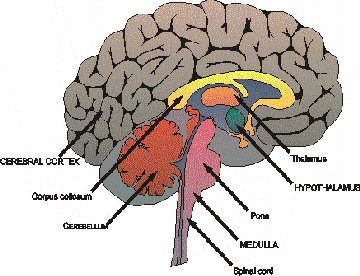- What is Primitive neuroectodermal tumour of the brain (PNET)
- Statistics on Primitive neuroectodermal tumour of the brain (PNET)
- Risk Factors for Primitive neuroectodermal tumour of the brain (PNET)
- Progression of Primitive neuroectodermal tumour of the brain (PNET)
- Symptoms of Primitive neuroectodermal tumour of the brain (PNET)
- Clinical Examination of Primitive neuroectodermal tumour of the brain (PNET)
- How is Primitive neuroectodermal tumour of the brain (PNET) Diagnosed?
- Prognosis of Primitive neuroectodermal tumour of the brain (PNET)
- How is Primitive neuroectodermal tumour of the brain (PNET) Treated?
- Primitive neuroectodermal tumour of the brain (PNET) References
What is Primitive neuroectodermal tumour of the brain (PNET)

Statistics on Primitive neuroectodermal tumour of the brain (PNET)
Incidence is uncertain because PNETs are rare. They are usually described as a ‘tumour of childhood’. In one study the average age of diagnosis was between 3 and 8 years. Although cancer is rare in children, brain tumors are the most common type of childhood cancer other than leukemia and lymphoma.
Risk Factors for Primitive neuroectodermal tumour of the brain (PNET)
Researchers have not been able to find an identifiable cause or risk factors for PNET. Most cases of PNET appear to happen spontaneously as the result of a mutation in the DNA.There doesn’t appear to be a genetic predisposition, meaning the disease does not seem to run in families. Certain conditions have an increased association with PNETs. These include: Li-Fraumeni syndrome, Turcot syndrome and Gorlin syndrome.
Progression of Primitive neuroectodermal tumour of the brain (PNET)
Tumours invade and destroy normal tissue, causing damage to sensory and cognitive functions of the brain. Increased intracranial pressure may result from the enlarging tumour mass, cerebral oedema (accumulation of fluid in the brain caused by swelling) and the obstruction of cerebrospinal fluid drainage (fluid that circulates throughout the brain and spinal cord).
How is Primitive neuroectodermal tumour of the brain (PNET) Diagnosed?
The only way to confirm a PNET is by taking a sample of the affected tissue and examining it under a microscope. An MRI scan or CT is usually performed to identify the location of the cancer and how far it has spread.
Prognosis of Primitive neuroectodermal tumour of the brain (PNET)
The prognosis (chance of recovery) depends on:
- time of diagnosis (the earlier the better).
- age of the patient.
- Size and spread of the tumour before surgery.
- Cancer cells remaining after surgery.
How is Primitive neuroectodermal tumour of the brain (PNET) Treated?
There are usually many health professionals involved in the care of someone with a brain tumour. These include a neurologist, neurosurgeon, radiation oncologist and medical oncologist. The main types of treatment include surgery,
radiation therapy and chemotherapy. Surgery is usually used to make a diagnosis and improve symptoms. Radiation therapy is usually given in combination with another form of therapy, such as surgery, and has been shown to improve outcomes. Chemotherapy is usually administered in combination with radiotherapy.
Primitive neuroectodermal tumour of the brain (PNET) References
[1] Ghosh S. Primitive neuroectodermal tumours of the central nervous system. eMedicine 2001. [available online: http://www.emedicine.com/neuro/topic326.htm]
[2] National Cancer Institute: Childhood Supratentorial Primitive Neuroectodermal Tumors and Pineoblastoma treatment. [available online: http://www.nci.nih.gov/cancertopics/pdq/treatment/childSPNET/Patient/page2]
[3] Osanai M, Yamaguchi J, et al. Unique cellular features of peripheral primitive neuroectodermal tumour. Med Electron Microsc 2004; 37: 193-197.
[4] The Merck Manual of Diagnosis and Therapy: Chapter 177. CNS Neoplasms.
[available online: http://www.merck.com/]
All content and media on the HealthEngine Blog is created and published online for informational purposes only. It is not intended to be a substitute for professional medical advice and should not be relied on as health or personal advice. Always seek the guidance of your doctor or other qualified health professional with any questions you may have regarding your health or a medical condition. Never disregard the advice of a medical professional, or delay in seeking it because of something you have read on this Website. If you think you may have a medical emergency, call your doctor, go to the nearest hospital emergency department, or call the emergency services immediately.







